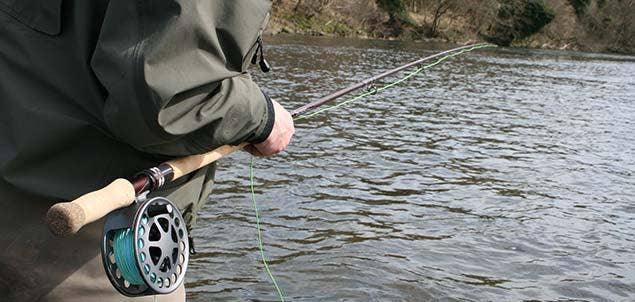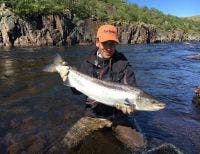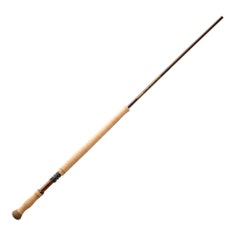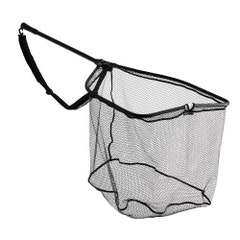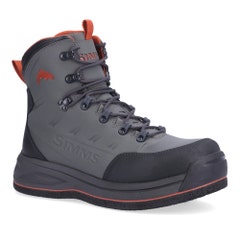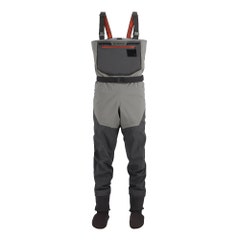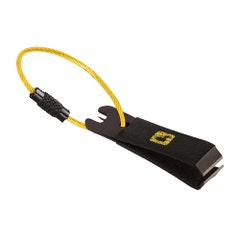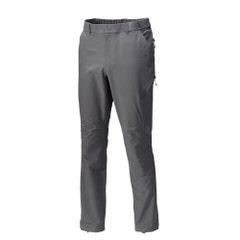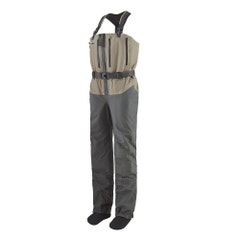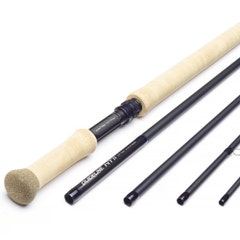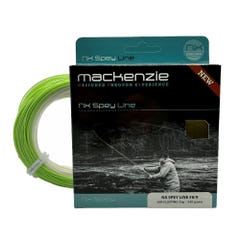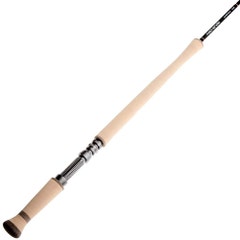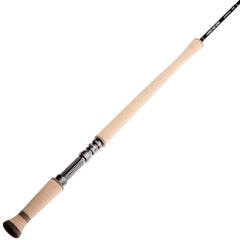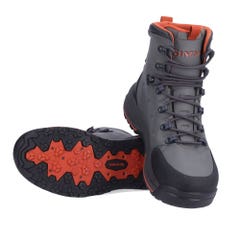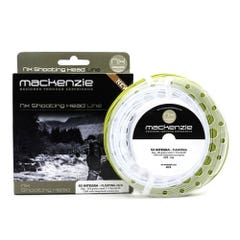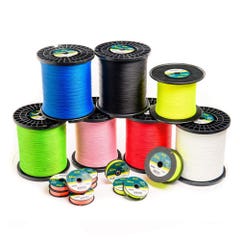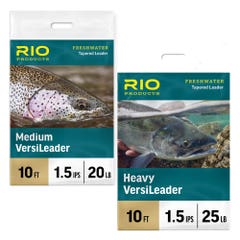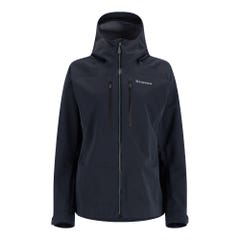For most of us, the 2018 salmon fishing season won’t go down as one for the history books, except perhaps for all the wrong reasons.
Across the British Isles, and indeed further afield, many of us struggled to hook up with Salmo salar this year. Numbers of fish were down in most of our river systems, while freezing conditions brought about by the ‘Beast from the East’ made for challenging fishing.
Then, just when we thought things were beginning to warm up, they did, and the situation became even worse when we were hit with the hottest temperatures since the infamous summer of 1976. Due to soaring water temperatures and plummeting dissolved oxygen concentrations, some badly affected rivers closed to anglers in the interests of fish welfare and conservation.
On 23rd July the Hereford District Angling Association chose to close fishing on their stretch of the River Wye, and other systems as far away as Norway’s famous Namsen and Gaula rivers followed suit soon after. Not even Russia’s Kola Peninsula escaped the heatwave and anglers up in the Arctic Circle faced temperatures exceeding 30C. There’s no two ways about it – this season has been a tough one!
However, as I write this, some of our rivers are seeing tentative signs of a back-end run that might help to salvage a portion of our season, temperatures are falling, rain is on the way and fresh-run autumn salmon are being caught. Before long, it’ll be time to hang up the waders for another winter, so it’s time to get out there and make the most of the time that remains.
Many of us get caught in the trap of sticking with the same fly all day or indeed all week and it’s usually a Cascade variation that gets selected for a swim. If fresh fish are running, I don’t think there are many better patterns than something along these lines, although bear in mind that at this time of year you’re probably fishing over resident fish too.
For that reason, I like to vary my approach. Traditional back-end patterns include flies in deep red and claret tones, perhaps there’s something about these hues that aggravates a resident fish into taking – who really knows! I do believe though that these fish have seen dozens of Cascades and Willie Gunns swinging past them and now is the time to serve up something a little different.
Here are a few things you can try to lure an autumn salmon out of its lair...
Top Tips for Autumn Salmon Fishing
Go Red
Tradition says it works and who are we to argue? Give deep red and claret flies a go this autumn and see if they provoke an aggressive reaction from resident fish. Patterns to fish include Red Ally’s Shrimp and the Calvin Shrimp. A Red Francis, in either tube fly variant or on a small dressed double is also well worth a throw.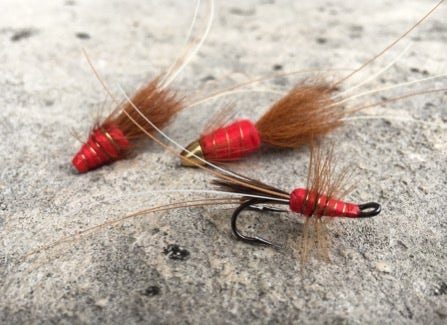 Varitions of the Red Francis salmon fly.
Varitions of the Red Francis salmon fly.Don’t discount purple flies either. The 27lb salmon, pictured below, was caught in the last week of the season on the River Spey back in 2011 – A ‘kipper’ of the highest order but still my biggest ever salmon!
 This 27lb back-end fish took a Grant's Orange.
This 27lb back-end fish took a Grant's Orange.The fish took a 'Grant’s Orange' fly, designed by Delfur ghille Grant Morrison, incorporating a bright red head and simple mix of orange and purple bucktail in the wing – classic back-end colours that did the job on this occasion.
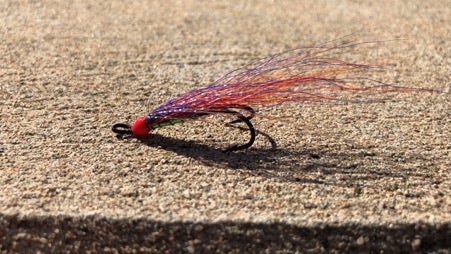 Grant’s Orange salmon fly.
Grant’s Orange salmon fly.Go Small
If the water remains low, a subtle approach can really prove to be effective for fish that have spent the last few weeks dodging brightly coloured orange and yellow flies. Something small and black like a Stoat’s Tail or Executioner in size 10 or 12 may just be subtle enough to hook a fish that wouldn’t have otherwise moved out of its lie for a larger pattern.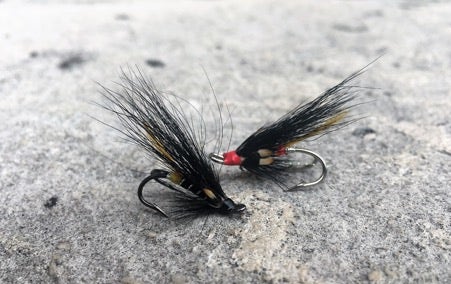 A Stoat’s Tail and Executioner – two small flies that may just entice a resident fish.
A Stoat’s Tail and Executioner – two small flies that may just entice a resident fish.Go Large
I always advocate packing a Sunray Shadow or two in your fly box and this is a great time of year to fish them, particularly in low water conditions. Overcast skies are taking over from our bright summer sun, water temperatures are returning to normal, and fish become more willing to rise-up and take on or near to the surface before the cold weather hits again.There are two approaches to fishing the Sunray that I like to employ, however I would always advocate covering likely lies with more conventional patterns first (see above!). The first approach is to fish with a surface wake, allowing the Sunray to create a tantalising ‘V’ as it is drawn across the pool. This works particularly well in tail glides where fish may be resting up.
For this you’ll need to remove any sink-tip you may have on the end of your fly line and attach a length of Maxima monofilament, usually around 10-12ft will suffice. I like Maxima Chameleon in 15lb breaking strain for most scenarios. I’ve experimented with fluorocarbon but it drags the fly down from the surface and you may struggle to get the desired effect. Attach a Sunray Shadow (tied on a plastic tube) and a decent hook such as Loop Double Tube Hooks to the back and you’re ready to start skating.
To enhance the fly’s wake, you may wish to form a riffling hitch knot around the head of the tube, or alternatively buy flies which have a ready-made riffle-hitch hole through which to pass the leader. This ensures that the head of the tube sits high on the surface, creating the attention-grabbing wake that can stir up a resident from the depths. Try to keep the fly moving steadily across the pool, keeping your rod-tip high and moving it slowly towards the bank as you make long, pulling retrieves. You can experiment with different speeds, but a steady pace seems to be most effective. At the very least, you may instigate a violent swirl at your fly, helping you to locate a taking-fish that may be worth covering again with one of your more conventional patterns.
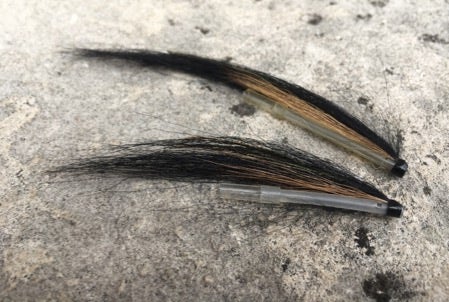 The Sunray Shadow – You should never be without one or two of these, especially when fishing over resident fish.
The Sunray Shadow – You should never be without one or two of these, especially when fishing over resident fish.Go Fast
The second Sunray approach, and one that has proved very effective for me in the past is to fish them fast in the mid-water zone. If you tie your own tubes, consider tying onto an aluminium tube body to help you get your fly to the desired depth more easily. For this method, I like to fish an intermediate or slow-sink RIO sink tip with a short 5ft leader of Seaguar 19lb fluorocarbon. Speed is the key here. Cast them square or even a little upstream and pull them through the pool at speed. Here, the ‘Roly-Poly’ retrieve is your friend and not just the preserve of reservoir anglers. Tuck the rod under your casting arm and use both hands to create a steady but speedy retrieve across the pool – It can sometimes result in arm-wrenching takes. A September River Tay salmon caught on a fast-stripped Sunray Shadow on an intermediate sink-tip.
A September River Tay salmon caught on a fast-stripped Sunray Shadow on an intermediate sink-tip.Go Deep
As September makes way for October, lots of our rivers will be shutting up shop for the year. There’s still great back-end fishing to be had though on the most famous autumn salmon river of them all – the River Tweed, where salmon runs peak in October and November.Temperatures are falling, the days are shortening, and cold winds chill the surface of the water. It’s time to reach for the tips wallet and tube fly box again. Make sure you’re equipped with a selection of triple density shooting heads, such as the Guidline Power Taper 3D+, RIO Scandi 3D or Hardy Scandi Rocket to help you explore the depths with ease, as well as a range of 10ft sink tips to fine-tune your presentation.
The Junction Shrimp is a great back-end Tweed fly, having been designed with white hair to show up in coloured water, as well as helping to distinguish it from any passing leaves. A selection of copper and tungsten tubes in various sizes should also feature in your selection, helping you to get down to the fish as water levels rise and temperatures fall.
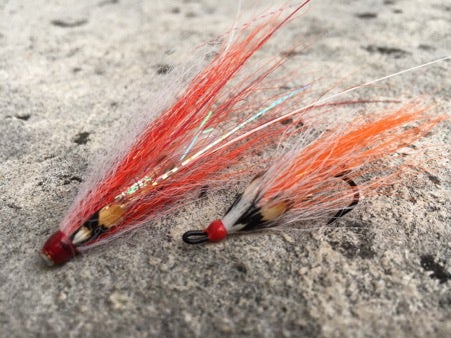 The Junction Shrimp in tube fly and dressed fly variants.
The Junction Shrimp in tube fly and dressed fly variants.Salmon fishing is an art, not a science, but by thinking our way methodically through different methods and paying attention to water height, colour and temperature, we can all hope to add another fish or two to our 2018 season tally.
Remember, if you catch a back-end monster in an English or Welsh river, make sure to enter your fish into the Charles Farlows Trophy!
There are no hard and fast rules for autumn salmon fishing but, here are a few pointers from Johnny Muir of the Atlantic Salmon Trust. Make sure you also read our main guide on how to fish for salmon.
The river in autumn is a delightful place to be and with the season beginning to turn it is indeed a time of mists and mellow fruitfulness. As far as our quarry is concerned there are likely to be big fish in the river running to their spawning grounds as the end of the season approaches and on some rivers, such as the Tweed, the back end fishing can be quite exceptional.
Top Tips for Autumn Salmon Fishing
Clothing for Salmon Fishing
You will fish most effectively and enjoy your day more if you are dressed properly so do make sure you have comfortable, warm and waterproof clothing, autumn temperatures can be very chilly indeed.
Also make sure your waders aren’t leaking and check and replace studs if necessary. You should also ensure you have a good wading staff with a rubber bung to avoid unnecessary noise and that your life vest has been checked and serviced.
Water Conditions for Autumn Salmon Fishing
Generally speaking, the rivers will be fuller at this time of year and the best of the fishing is often in the wake of a flood. Heavy water after a prolonged dry spell is not always the best time to be out as the river will be carrying a lot of debris, but as the level stabilizes the fishing is likely to improve.
Rivers do vary though, so always liaise with the ghillies on your beat, they know the water and how it responds in differing conditions better than anyone.
Autumn Salmon Fishing Tackle and Tactics
Higher water, the possibility of bigger fish and conditions that are likely to be far more hostile than you experienced during the summer months all call for you to look at your autumn salmon fly fishing tackle with a critical eye – and beef it up if required. But conditions, particularly in early autumn, can be very variable indeed so you do need to be prepared for all eventualities.
It’s always useful to have a selection of sinking fly lines in a range of densities in your armoury to allow for tactical changes in relation to changing temperatures and water level.
There are many options - Spey, skagit or shooting head - and all are good in the right conditions and all have their own pros and cons. At the end of the day it will come down to your own personal preference. The RIO Scandi VersiTip Kit is a favourite of the team here, but do please call us on 0207 484 1000 or email us if you would like advice on which line is likely to the best option for you.
 Former Farlows Fishing Manager, Jason, with a cracker!
Former Farlows Fishing Manager, Jason, with a cracker!Autumn Salmon Fishing Flies
Fly choice will vary according to the river you are fishing but make sure you have a range of tube flies tied on tungsten, brass/copper, alloy and plastic tubes with classic patterns, such as Willie Gunns and cascades, always reliable. Reds and orange can be particularly effective colours at the back end, but do pop a few singles and small doubles in your box too, in case you are faced with low water, with an Indian summer you could be facing tough fishing even in October!
Many of us get caught in the trap of sticking with the same fly all day or indeed all week and it’s usually a Cascade variation that gets selected for a swim. If fresh fish are running, I don’t think there are many better patterns than something along these lines, although bear in mind that at this time of year you’re probably fishing over resident fish too.
For that reason, I like to vary my approach. Traditional back-end patterns include flies in deep red and claret tones, perhaps there’s something about these hues that aggravates a resident fish into taking – who really knows! I do believe though that these fish have seen dozens of Cascades and Willie Gunns swinging past them and now is the time to serve up something a little different.
Here are a few things you can try to lure an autumn salmon out of its lair...
Go Red
Tradition says it works and who are we to argue? Give deep red and claret flies a go this autumn and see if they provoke an aggressive reaction from resident fish. Patterns to fish include Red Ally’s Shrimp and the Calvin Shrimp. A Red Francis, in either tube fly variant or on a small dressed double is also well worth a throw.
 Varitions of the Red Francis salmon fly.
Varitions of the Red Francis salmon fly.
Don’t discount purple flies either. The 27lb salmon, pictured below, was caught in the last week of the season on the River Spey back in 2011 – A ‘kipper’ of the highest order but still my biggest ever salmon!
 This 27lb back-end fish took a Grant's Orange.
This 27lb back-end fish took a Grant's Orange.
The fish took a 'Grant’s Orange' fly, designed by Delfur ghille Grant Morrison, incorporating a bright red head and simple mix of orange and purple bucktail in the wing – classic back-end colours that did the job on this occasion.
 Grant’s Orange salmon fly.
Grant’s Orange salmon fly.Go Small
If the water remains low, a subtle approach can really prove to be effective for fish that have spent the last few weeks dodging brightly coloured orange and yellow flies. Something small and black like a Stoat’s Tail or Executioner in size 10 or 12 may just be subtle enough to hook a fish that wouldn’t have otherwise moved out of its lie for a larger pattern.
 A Stoat’s Tail and Executioner – two small flies that may just entice a resident fish.
A Stoat’s Tail and Executioner – two small flies that may just entice a resident fish.Go Large
I always advocate packing a Sunray Shadow or two in your fly box and this is a great time of year to fish them, particularly in low water conditions. Overcast skies are taking over from our bright summer sun, water temperatures are returning to normal, and fish become more willing to rise-up and take on or near to the surface before the cold weather hits again.
There are two approaches to fishing the Sunray that I like to employ, however I would always advocate covering likely lies with more conventional patterns first (see above!). The first approach is to fish with a surface wake, allowing the Sunray to create a tantalising ‘V’ as it is drawn across the pool. This works particularly well in tail glides where fish may be resting up.
For this you’ll need to remove any sink-tip you may have on the end of your fly line and attach a length of Maxima monofilament, usually around 10-12ft will suffice. I like Maxima Chameleon in 15lb breaking strain for most scenarios. I’ve experimented with fluorocarbon but it drags the fly down from the surface and you may struggle to get the desired effect. Attach a Sunray Shadow (tied on a plastic tube) and a decent hook such as Loop Double Tube Hooks to the back and you’re ready to start skating.
To enhance the fly’s wake, you may wish to form a riffling hitch knot around the head of the tube, or alternatively buy flies which have a ready-made riffle-hitch hole through which to pass the leader. This ensures that the head of the tube sits high on the surface, creating the attention-grabbing wake that can stir up a resident from the depths. Try to keep the fly moving steadily across the pool, keeping your rod-tip high and moving it slowly towards the bank as you make long, pulling retrieves. You can experiment with different speeds, but a steady pace seems to be most effective. At the very least, you may instigate a violent swirl at your fly, helping you to locate a taking-fish that may be worth covering again with one of your more conventional patterns.
 The Sunray Shadow – You should never be without one or two of these, especially when fishing over resident fish.
The Sunray Shadow – You should never be without one or two of these, especially when fishing over resident fish.Go Fast
The second Sunray approach, and one that has proved very effective for me in the past is to fish them fast in the mid-water zone. If you tie your own tubes, consider tying onto an aluminium tube body to help you get your fly to the desired depth more easily. For this method, I like to fish an intermediate or slow-sink RIO sink tip with a short 5ft leader of Seaguar 19lb fluorocarbon. Speed is the key here. Cast them square or even a little upstream and pull them through the pool at speed. Here, the ‘Roly-Poly’ retrieve is your friend and not just the preserve of reservoir anglers. Tuck the rod under your casting arm and use both hands to create a steady but speedy retrieve across the pool – it can sometimes result in arm-wrenching takes.
 A September River Tay salmon caught on a fast-stripped Sunray Shadow on an intermediate sink-tip.
A September River Tay salmon caught on a fast-stripped Sunray Shadow on an intermediate sink-tip.Go Deep
As September makes way for October, lots of our rivers will be shutting up shop for the year. There’s still great back-end fishing to be had though on the most famous autumn salmon river of them all – the River Tweed, where salmon runs peak in October and November.
Temperatures are falling, the days are shortening, and cold winds chill the surface of the water. It’s time to reach for the tips wallet and tube fly box again. Make sure you’re equipped with a selection of triple density shooting heads, such as the Guideline Power Taper 3D+, RIO Scandi 3D or Mackenzie G3 Phased Density 5 Shooting Head to help you explore the depths with ease, as well as a range of 10ft sink tips to fine-tune your presentation.
The Junction Shrimp is a great back-end Tweed fly, having been designed with white hair to show up in coloured water, as well as helping to distinguish it from any passing leaves. A selection of copper and tungsten tubes in various sizes should also feature in your selection, helping you to get down to the fish as water levels rise and temperatures fall.
 The Junction Shrimp in tube fly and dressed fly variants.
The Junction Shrimp in tube fly and dressed fly variants.
Salmon fishing is an art, not a science, but by thinking our way methodically through different methods and paying attention to water height, colour and temperature, we can all hope to add another fish or two to our 2023 season tally.
Remember, if you catch a back-end monster in an English or Welsh river, make sure to enter your fish into the Charles Farlows Trophy!
Enjoy your autumn salmon fishing and remember that back end fish are not always the best for the table, by returning them you will be doing the river a great service.


